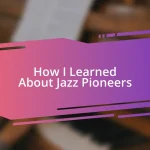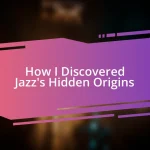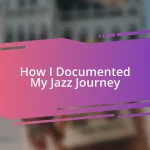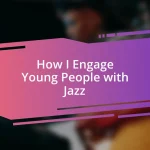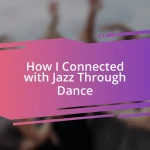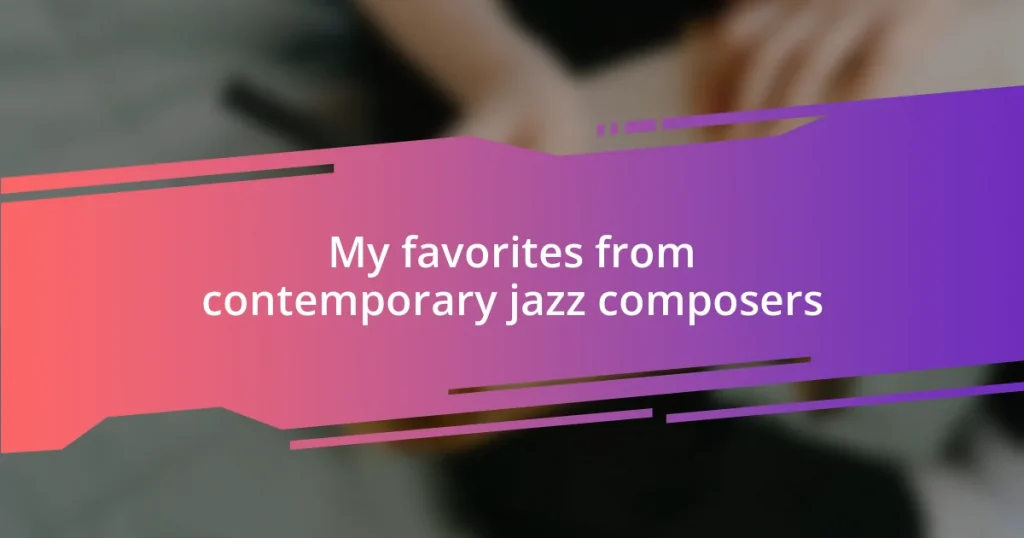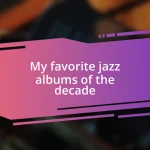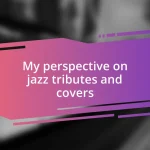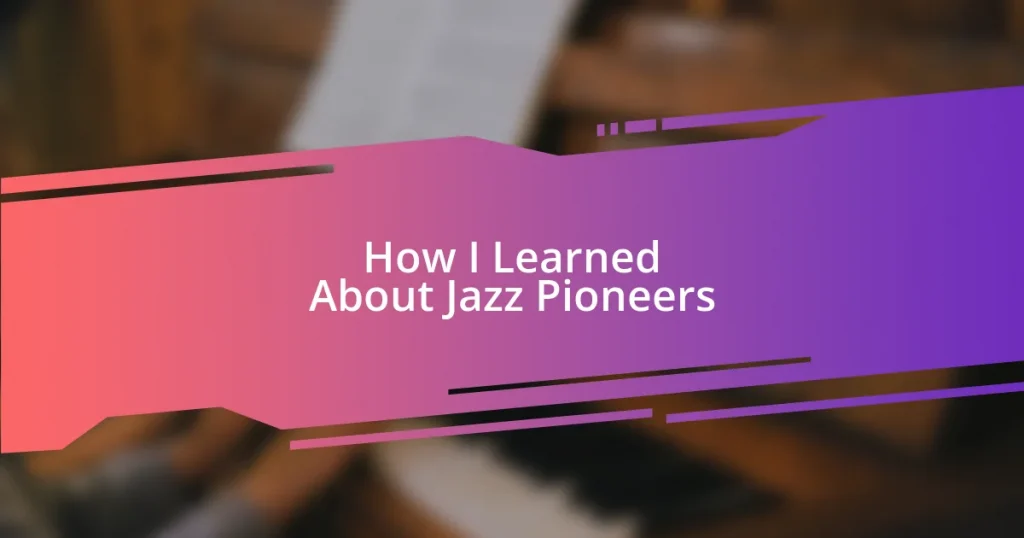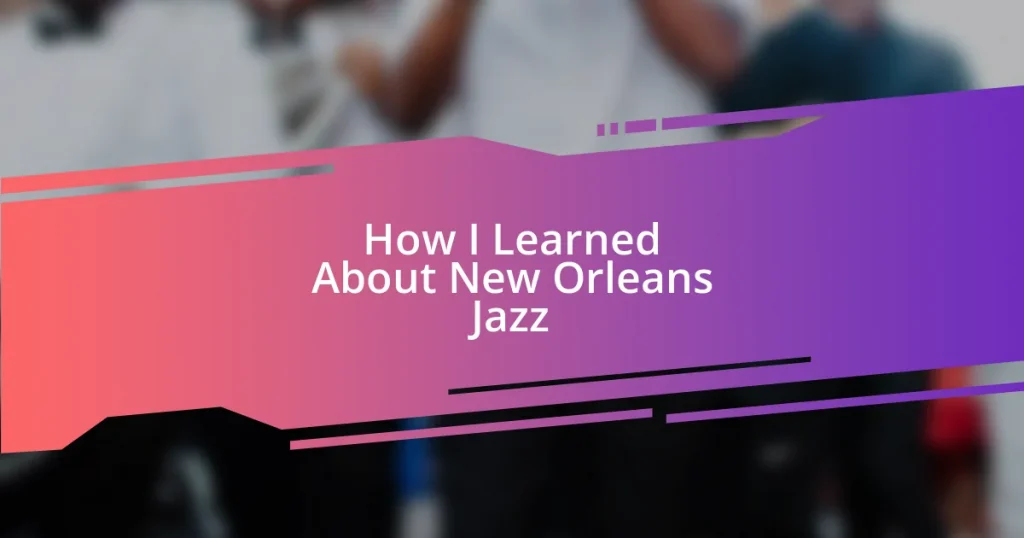Key takeaways:
- Contemporary jazz composers like Kamasi Washington and Esperanza Spalding blend various genres and address themes of identity and social issues, creating deeply emotional and reflective music.
- Key features of contemporary jazz include fusion of genres, improvisation, and unconventional song structures, which challenge traditional expectations and invite unique listening experiences.
- Emerging artists like Melissa Aldana and Theo Croker are expanding the genre by innovatively incorporating diverse influences, reaffirming jazz’s evolution while honoring its roots.
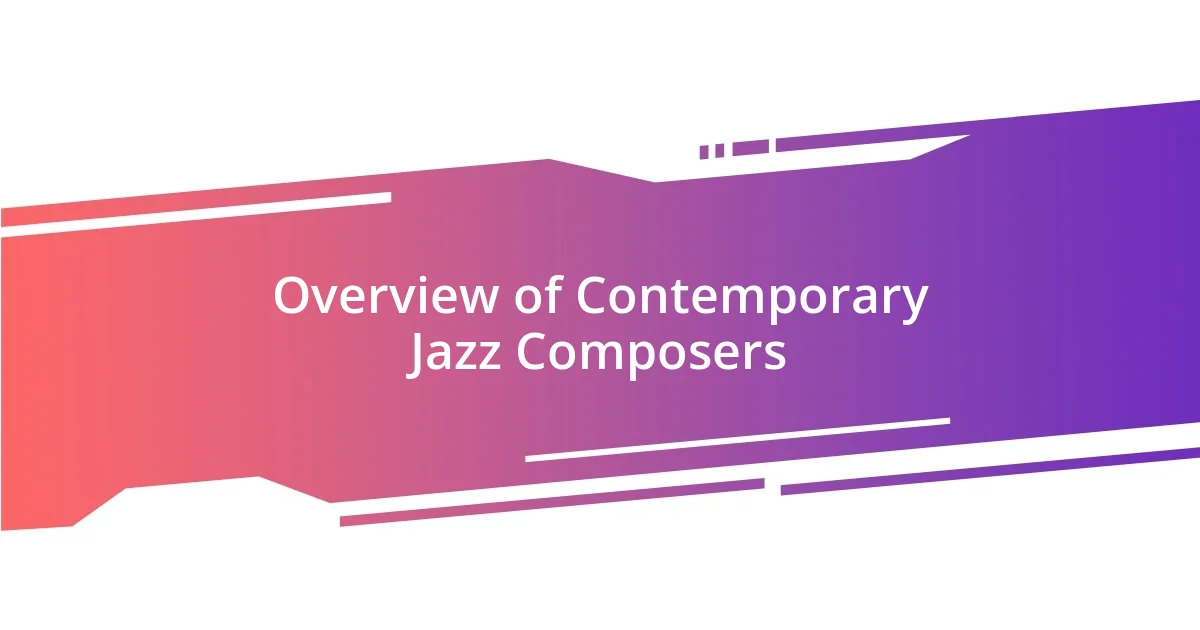
Overview of Contemporary Jazz Composers
Contemporary jazz composers are reshaping the landscape of music today, pushing boundaries and blending genres in truly innovative ways. When I listen to their work, it feels like witnessing a conversation unfolding in real time, where each note seems to reflect the artist’s emotional landscape. Isn’t it fascinating how music can capture that much depth?
Some may not realize that contemporary jazz is as diverse as the musicians who create it. From the rhythmic complexity seen in Marcus Miller’s compositions to the lush harmonies from artists like Esperanza Spalding, there’s a richness that draws you in, making you feel like a part of their journey. I often find myself lost in their intricate melodies, wondering how they balance personal expression with technical skill so effortlessly.
As I navigate through the works of contemporary jazz composers, it strikes me how they courageously address themes of identity, culture, and social issues within their music. For instance, I’ve felt a profound connection to the narrative woven through Kamasi Washington’s projects, which often resonate with my own experiences and thoughts. Don’t you think it’s awe-inspiring how music can bridge personal stories and communal narratives?
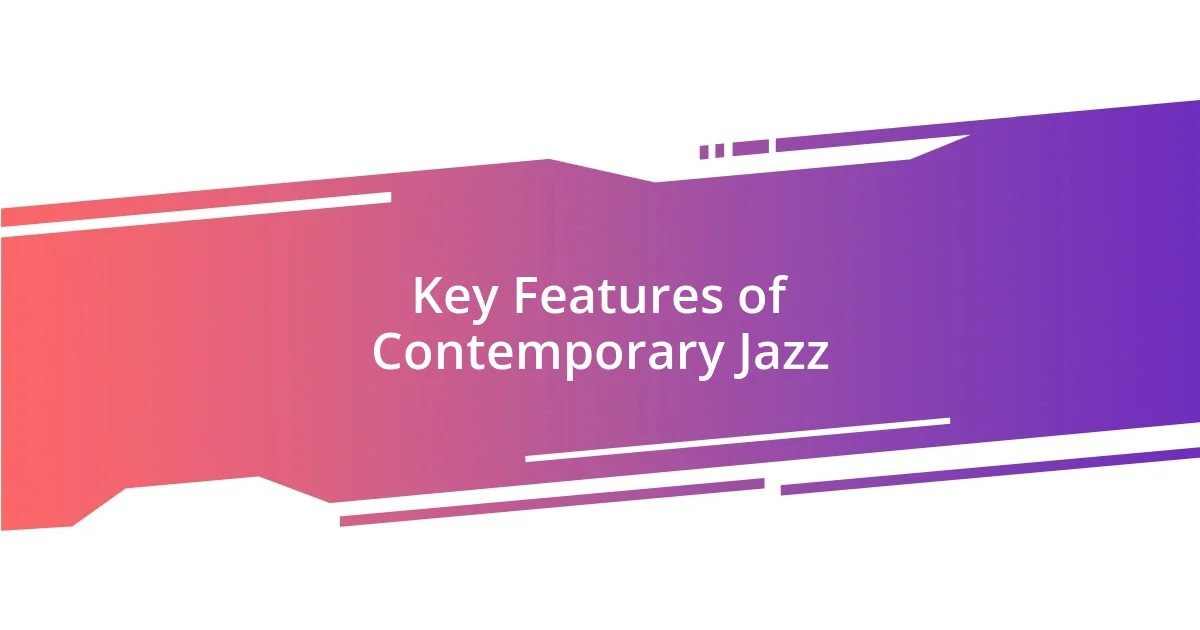
Key Features of Contemporary Jazz
Contemporary jazz is marked by its fusion of various musical influences, adeptly merging styles like funk, rock, hip-hop, and classical. I remember the first time I heard Robert Glasper; his ability to blend jazz with hip-hop aesthetics opened my eyes to a new world of sound that I hadn’t anticipated. It felt like he was crafting a musical dialogue between genres, seamlessly integrating them while retaining the essence of jazz.
Improvisation continues to be a core element of contemporary jazz, allowing artists to express spontaneity and personal emotions in their performances. I often find myself captivated during live sessions, where each musician responds to the others in real time, creating a fluid tapestry of sound. It’s exhilarating to witness how the boldness of improvisation invites vulnerability and authenticity, making each performance a unique experience.
The use of unconventional song structures and complex time signatures is also a defining feature of contemporary jazz. I’ve encountered pieces that flip my expectations upside down, taking me on unexpected sonic journeys. These compositions challenge my understanding of rhythm and melody, pushing me to engage with music in a more active and thoughtful way.
| Feature | Description |
|---|---|
| Fusion of Genres | Combining elements from various musical styles to create unique soundscapes. |
| Improvisation | Allowing musicians to express spontaneity and emotion in real time. |
| Unconventional Structures | Utilizing complex time signatures and innovative arrangements to challenge traditional expectations. |
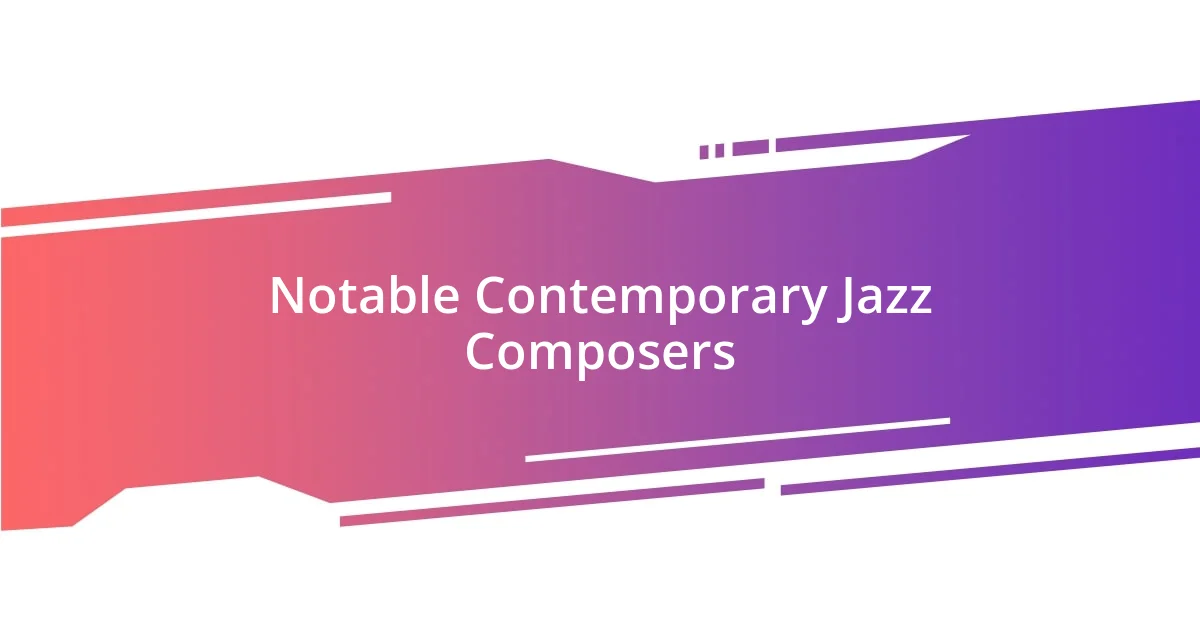
Notable Contemporary Jazz Composers
Contemporary jazz is incredibly rich thanks to the diverse voices of its composers. Take the works of Terence Blanchard, for instance; his ability to merge cinematic storytelling with jazz creates an emotional experience that resonates deeply with me. Each piece feels like an invitation to reflect on broader societal themes. I remember listening to his score for “Da 5 Bloods,” and being struck by how the music captures the complexities of history and memory, making me feel undeniably connected to the narrative he was presenting.
Here’s a list of some notable contemporary jazz composers who are making waves in the music scene:
- Kamasi Washington: A saxophonist known for his grand, ambitious projects that explore identity and culture.
- Esperanza Spalding: A multi-talented artist blending jazz with elements of R&B and classical, crafting songs that often blur genre lines.
- Robert Glasper: Famed for his work in both jazz and hip-hop, his innovative approach redefines traditional jazz formats.
- Terence Blanchard: Renowned for his film scores, he brings a unique narrative depth to his compositions.
- Vijay Iyer: His work often challenges conventional jazz forms, incorporating various influences that create rich, layered soundscapes.
Each of these composers offers a unique perspective, infusing their cultural narratives and personal experiences into their music. I’ve often found joy in discovering the stories behind their compositions, which adds an entirely new layer to my listening experience. It’s as if each note carries a piece of their journey, inviting me to embark on my own exploration alongside them.
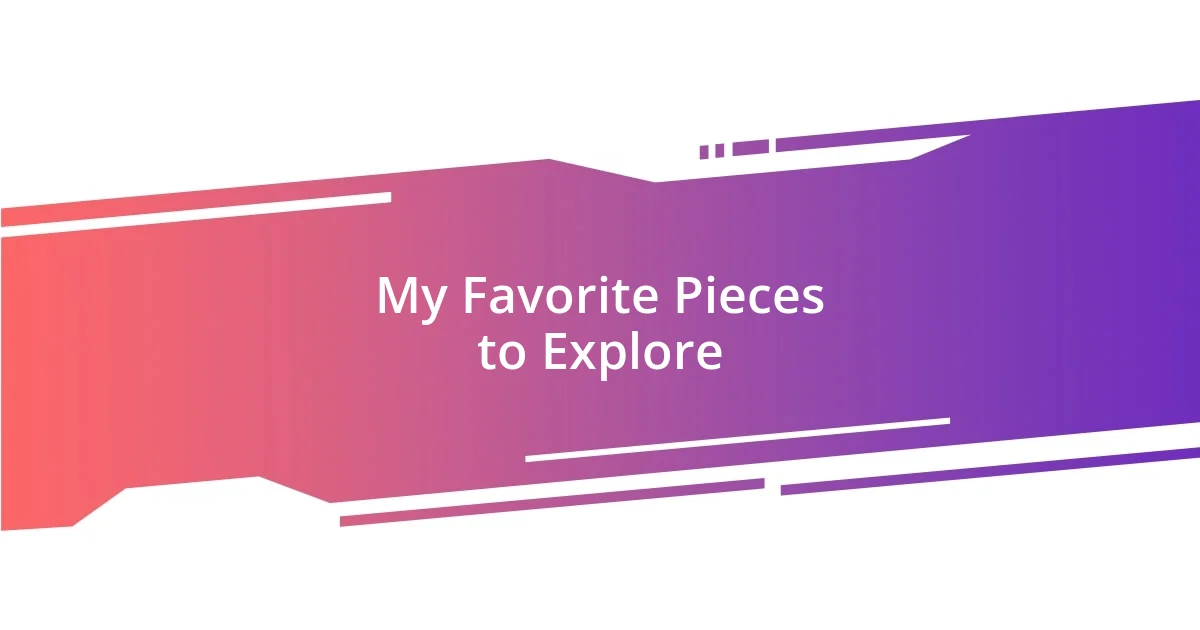
My Favorite Pieces to Explore
Exploring contemporary jazz is like delving into a treasure trove of creativity, and a couple of pieces always draw me back in. For instance, when I listen to Kamasi Washington’s “Truth,” I can’t help but feel overwhelmed by the emotion woven into each note. It’s as if he’s inviting me to journey through layers of identity, culture, and self-discovery. Have you ever felt that music could speak directly to your soul? This piece does just that for me, stirring feelings I sometimes can’t even put into words.
Another fantastic piece to explore is Esperanza Spalding’s “I Know You Know.” The way she infuses elements of R&B into jazz makes it incredibly vibrant. I remember dancing around my living room the first time I heard it; the playful energy just couldn’t keep me still. In jazz, we often seek depth, but this piece reminds me that there’s joy too—an exuberance that can brighten even the dullest day. Have you found those pieces that make your heart leap with joy?
Then, there’s Robert Glasper’s “Morning Song,” which always takes me on a reflective journey. Each listen feels like stepping into a calm morning where all worries fade away, leaving only tranquility. I often think about how music, in these moments, becomes a sanctuary for our thoughts and feelings. It really makes me appreciate how a composition can resonate so deeply and speak to the experiences we all share, don’t you agree?
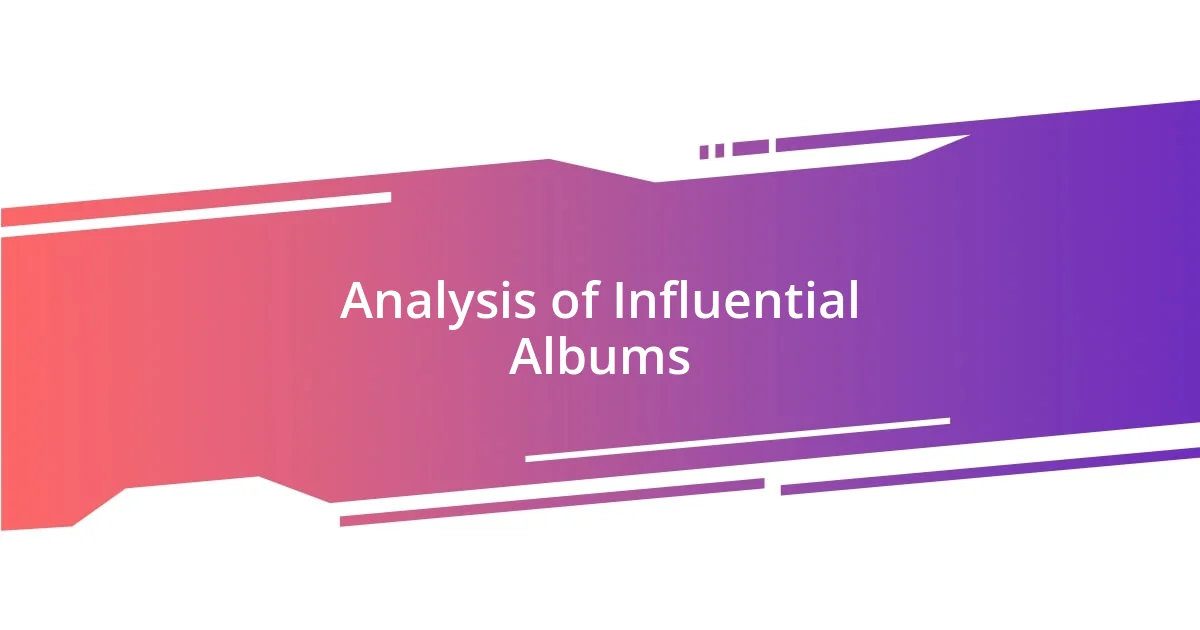
Analysis of Influential Albums
When diving into influential albums, it’s fascinating to consider Kamasi Washington’s “The Epic.” This three-disc masterpiece not only showcases his virtuosity but also embodies a collective creative spirit. I remember listening to it during a road trip, the expansive soundscapes unrolling like a film across the horizon. Each track felt like a chapter, making me reflect on my own journey intertwined with cultural narratives. Have you ever found an album that seems to narrate your life story? That’s precisely how “The Epic” resonated with me.
On a different note, Esperanza Spalding’s “Emily’s D+Evolution” is another pivotal work that transformed my understanding of jazz’s boundaries. This album acts as a sonic diary, inviting listeners into her world of introspection and artistic exploration. I vividly recall being captivated by the title track during a late-night listening session. The fusion of styles and emotional depth was both invigorating and soothing, almost as if she was sharing a personal revelation through her music. Isn’t it incredible how an album can transport you to an entirely different mindset?
Then there’s Robert Glasper’s “Black Radio,” which beautifully merges jazz with R&B and hip-hop, creating a sound that feels authentically modern yet deeply rooted. The first time I heard “Afrocentric,” I couldn’t help but groove along—it was as if the rhythm was calling me to join the conversation. Each collaboration within the album reflects a tapestry of influences and experiences that resonate with contemporary culture. It makes me ponder: how can an album not only reflect the times but also shape them? I think Glasper does just that, crafting pieces that challenge and inspire listeners to reimagine jazz in a new light.
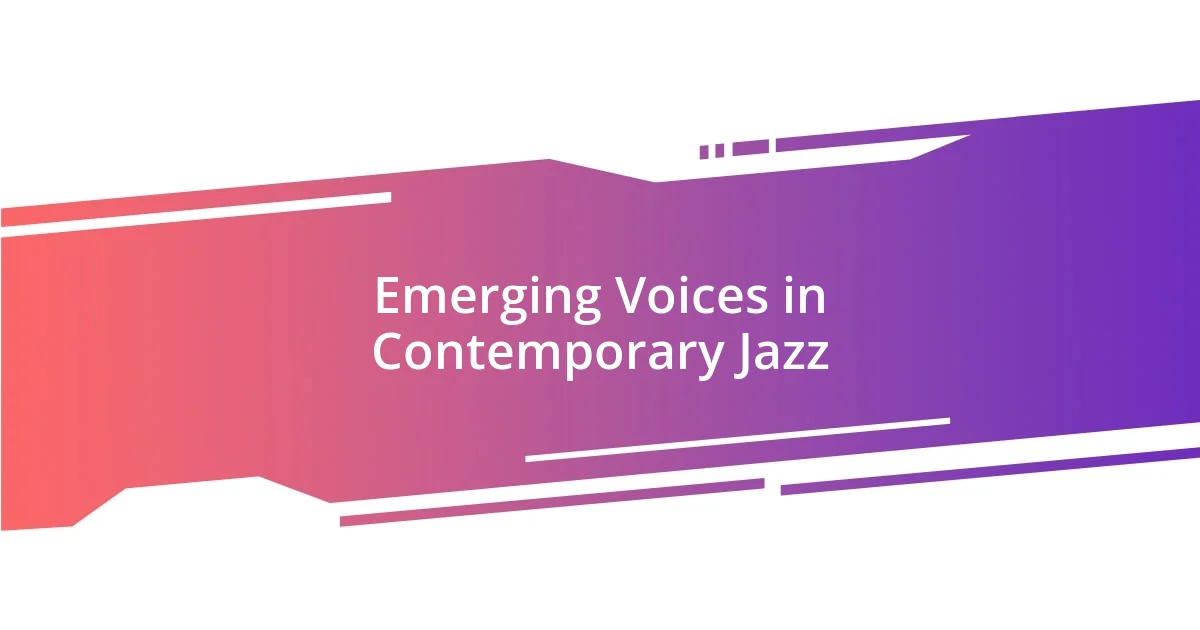
Emerging Voices in Contemporary Jazz
Emerging voices in contemporary jazz are like fresh air in a familiar room. I recently discovered the artistry of saxophonist Melissa Aldana, and her piece “Falling” resonated with me on multiple levels. The way she uses her saxophone to weave complex melodies feels almost like storytelling, and I found myself completely drawn into her narrative. Have you ever had that experience where a musician’s notes seem to echo your own thoughts and feelings? That’s exactly what happened for me with her music.
Then, there’s the innovative approach of trumpeter Theo Croker, whose work often fuses jazz with elements of funk and hip-hop. Listening to his album “Escape Velocity,” I felt invigorated by the vibrant energy in tracks like “The Message.” It was like stepping into a dynamic conversation that challenged my understanding of traditional jazz constructs. I sometimes wonder—how do these emerging artists redefine our expectations of this genre? Croker brilliantly illustrates that jazz can evolve while still honoring its roots.
Lastly, I can’t overlook the enchanting sounds of Irreversible Entanglements, a group that exemplifies the avant-garde side of contemporary jazz. Their track “Fire” left me in awe; the raw intensity combined with political undertones speaks volumes about our current societal landscape. I found myself reflecting on how jazz has always been a platform for expression and commentary. Have you felt the urgency in their music? To me, it’s a clear call for awareness and engagement, inviting us to listen and participate in the unfolding dialogue.
